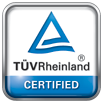Енергийна независимост и национална сигурност
History
The history of Mini Maritsa Iztok EAD is the history of contemporary opencast coal mining in Bulgaria. The Company`s main mission and objective are energy independence and national security achieved through regular coal supply to the thermal power plants in the area.
By mining the largest lignite deposit that has a productive area of 240 km2 Mini Maritsa Iztok EAD has decisive importance both for the national energy balance and for the economic prosperity of our region and country. It is a 100% state-owned sole-proprietor joint-stock company (its principal is the Bulgarian Energy Holding), and on 11th August 2005 the Company was granted a concession to mine lignite from the Maritsa Iztok coalfield for a period of 35 years.
Еxperts from State Mine Company, Pernik, began the geological prospecting at the Maritsa Iztok coalfield in 1948 and it was established that the reserves amounted to over 2.9 billion tonnes of coal. The first mining project was prepared in 1951 by GIPROSHAHT, Leningrad, and it envisaged seven opencast mines. Upon completion of the prospecting and the preparation of a detailed geological map of the area, Decree No 652 dated 16th June 1951 of the Council of Ministers was issued, establishing Maritsa Iztok, a state mining enterprise with a registered office in the village of Troyanovo.
Item 1 of Decree No 652 dated 16th June 1951 of the Council of Ministers reads, “Pursuant to Art. 1 of the State Enterprise Act, the coal deposits in the eastern area of the Maritsa coalfield shall be established as a state mining enterprise named Maritsa Iztok with a registered office in the village of Troyanovo, Stara Zagora District.” That decision was the logical outcome of the prospecting activities in 1947 and 1948, carried out by the experts in the Geology and Mine Surveying Service at Pernik State Mines. They came to the conclusion that the discovery of a large lignite basin could be expected. In the Maritsa Iztok coalfield more than 3 billion tonnes of prospected reserves are located over an area of 240 square kilometers. Despite the disadvantageous quality characteristics of the coal – low coalification level, high moisture contents, low calorific value, sulfur contents – the country’s growing fuel and energy demand in the 1950s led to the decision to mine the deposit. In March 1951 the preliminary design of the mines exploiting the deposit was ready. It was prepared by Lengiproshaht, Leningrad, with Eng. Mariya Demidova as general designer.
On March 3rd 1952 Yordan Ivanov and Kolyo Petkov, both of them being workers at Minstroy State Economic Group, under the supervision of Petko Nikolov, Technical Supervisor, turned the first sod of Troyanovo-1 Mine. It was for a lime slaking pit, and that marked the beginning of Mini Maritsa Iztok EAD. The first excavators were delivered in May and the groundbreaking ceremony for the construction of a railroad was held in June.
The construction of the mine was carried out by Minstroy State Economic Group - Third Building Area with Manager Donyo Pehlivanov. The enterprise undertook the task to train the workers to operate the excavators because there was no qualified personnel. In 1954 the first qualified excavator operators obtained their certificates: Ivan Mutov, Enyo Mutov, Gancho Tenev, Mihail Yankov, Ilcho Hristov, Dinyo Kishnev and Ivan Angelov. They took part both in the construction of Troyanovo-1 Mine and in the exploitation of the coalfield afterwards.
In March 1954 the first Soviet СЭ-3 excavators arrived at the site of Troyanovo-1 Mine (called Maritsa Iztok then). They were used to draw the pioneer cut. On 19th July the same year, the first train of overburden was loaded, and the external dump site formation started together with the actual construction of the mine.
In the 1970s a new design for mining operation development without any board (pillar) was adopted. It envisaged to initially extract the coal pillar between Troyanovo-1 and Troyanovo-3 mines and to form a single extraction field named Troyanovo-South Mine, with two strips: northern – that of Troyanovo-1 Mine – and southern – the one of Troyanovo-3 Mine. Along with this, large-scale mining and water engineering construction works were commenced in order to prepare for the extraction of the coal pillar between Troyanovo- 1 and Troyanovo-North mines. A part of that project included the redirection of the Ovcharitsa river with its right and left tributaries away from the coalfield, the construction of two dams, two small dams, five retention basins, 31 kilometers of channels, a kilometer of an underground tunnel, a six-kilometer-long underground channel and other smaller water-engineering works. On 21st March 2008 the coal pillar between the two mines was formally cut and thus production from the most efficient part of the coalfield began.

